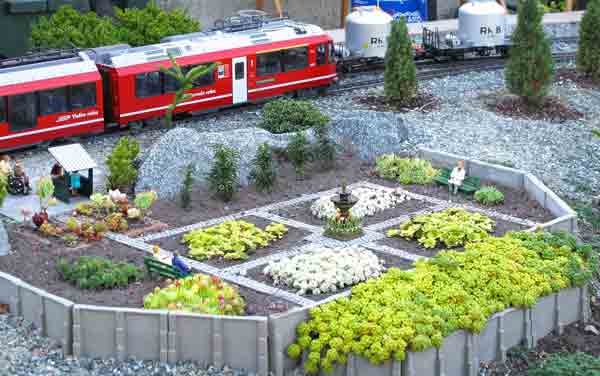
Photo 1 Keith Yundt Photo 2 Photo 3 Keith Yundt Photo 4 Keith Yundt Photo 5 Keith Yundt Photo 6 Keith Yundt Photo 7 Keith Yundt Photo 8 Keith Yundt We wanted to create a sort of English formal garden, with the various patterns and geometric designs that make them interesting (photo 1). The plants […]
Read More…
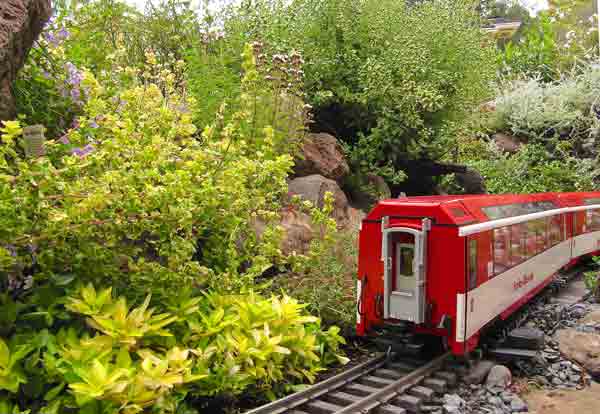
1. The Rhaetian Railway’s (RhB) Bernina Express runs from the Chur area in Switzerland over the Alps to Italy, here modeled with 12 varieties of thyme and other herbaceous perennials from the Mediterranean. Top left, pink fanflowers (Scaevola sp.) hang over pink stems of golden oregano (Oreganum vulgare ‘Aureum Crispum’, Zones 5-9). Underneath, lining the […]
Read More…
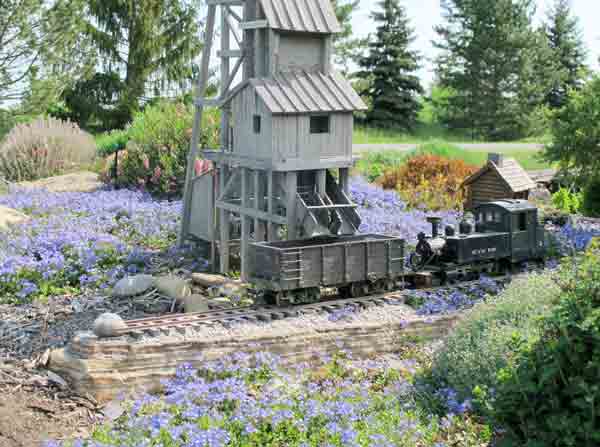
1. The hillside around the Skunk Holler Mine on the author’s Hoot ’n’ Holler Railroad is covered with Turkish veronica, which bursts into bloom every spring. Don Parker 2. The lighter-blue flowers in the foreground are produced by miniature speedwell (Veronica oltensis), growing shorter than Turkish veronica. Don Parker 3. Three different groundcovers flank this […]
Read More…
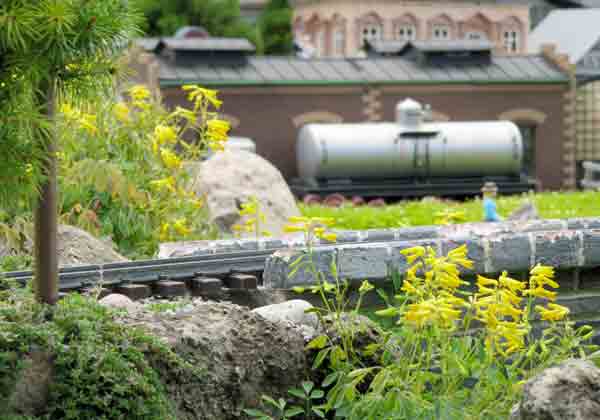
Nancy Norris Common names: False bleeding heart, Yellow corydalis, Yellow fumitory Latin name: Corydalis lutea Plant type: Perennial USDA Hardiness Zones: 4-8 Cultural needs: Moist, well drained, mildly acid or mildly alkaline soil; shade to part shade Plant size: 6-12″ Native to the southern Alps of Europe, yellow corydalis (kor-ID-ah-liss) sports tubular, spurred flowers on […]
Read More…
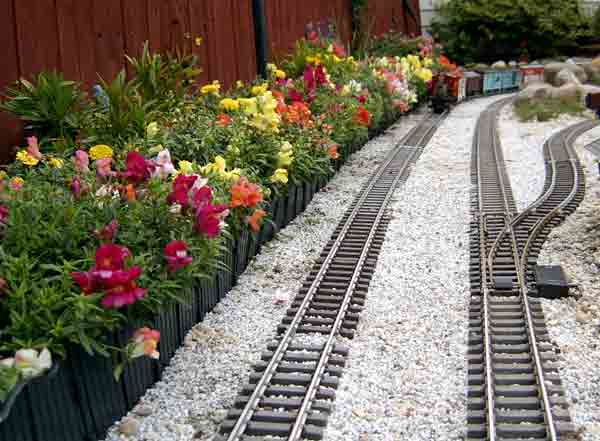
1. A spectacular display of annual flowers edges the mainline of Ned and Phyllis Ruetz’s Rock Canyon Garden Railroad in Michigan. Don Parker 2. White sweet alyssum blooms profusely on the right of a clump of blue lobelia on Tom Speer’s Hard Rock & Dynamite Railroad in Denver. Don Parker 3. What appears to be […]
Read More…
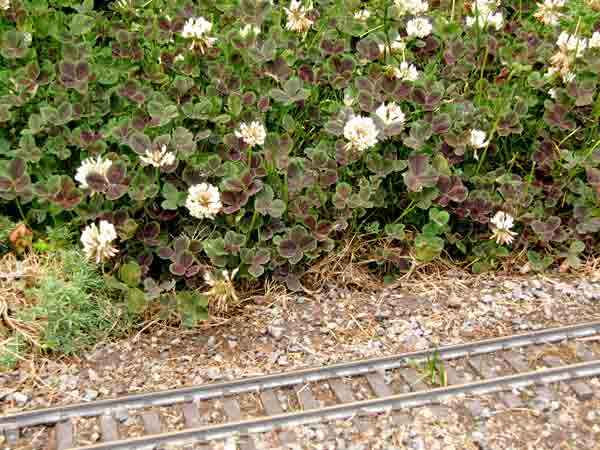
Nancy Norris Common name: Black-leaved clover Latin name: Trifolium repens ‘Atropurpureum’ Plant type: Groundcover USDA Hardiness Zones: 4-10 Cultural needs: Well drained, moist soil; sun to shade Plant size: 3-6″ high by 12″ wide White clover is native to every US State and almost all Canadian provinces. This portrait shows a selection of the common […]
Read More…
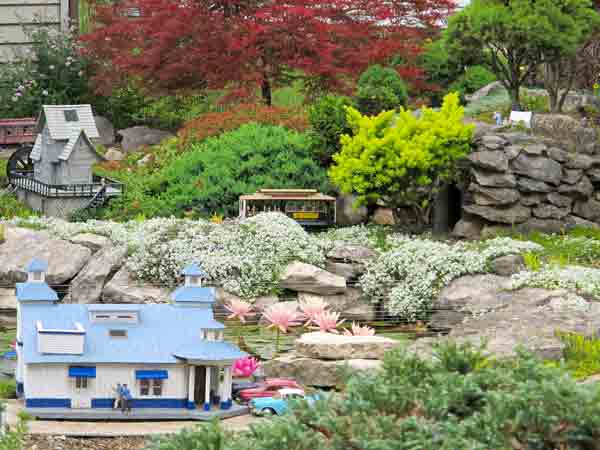
To elevate or not to elevate? That is the question we address while deciding on a style for our garden railway. Proponents of the “box” style like to raise the trains closer to view and say they don’t have to bend over so much, but it may surprise you to know that plenty of folks […]
Read More…
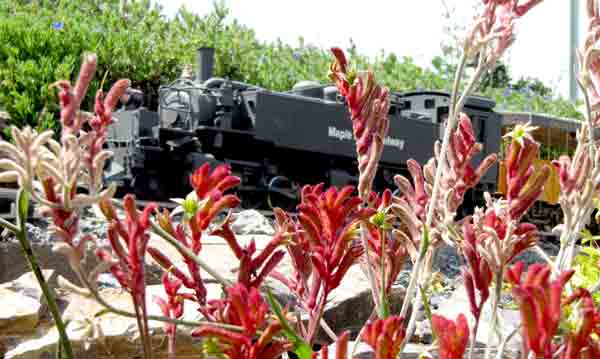
1. From the edge of the railway, red kangaroo paws (Anigozanthos ‘Dwarf Delight’, Zones 9-11) wave furry red fingers at trains from multi-branched stems all summer. Frank and Ruby Andrews planted these Aussie imports lower than the track to frame their Maple Rock Railway as trains pass. The plants’ frost-sensitive basal leaves may require mulching […]
Read More…
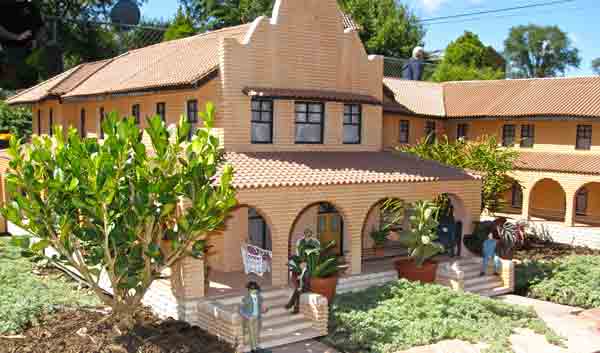
What do your buildings have to say for themselves? Each structure evokes a feeling for its purpose, the folks who might live or work there, and a bit about the history that transpired on the premises, as shown in photo 1. How the structure was built and maintained is “written on the walls.” All of […]
Read More…

Got a brown thumb? Need low, rugged groundcover? Here’s a botanical group of succulents with more than 400 varieties—sedums. Common names include “live forever” and “stonecrop” but most gardeners call them sedum (rhymes with “can’t beat ’em”). In this column you’ll see foliage colors that range like a rainbow, from red to purple and even […]
Read More…
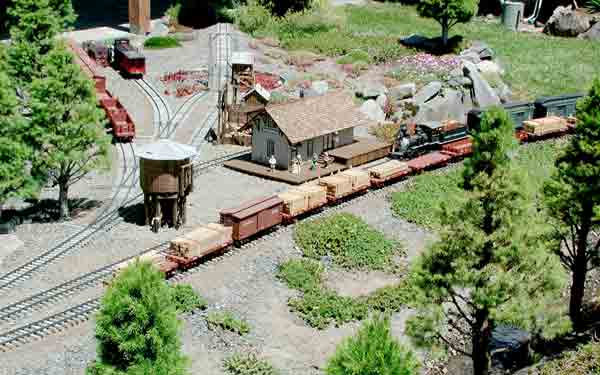
Railway at a glance Name: Baker & Grande Ronde Railroad Size: 60′ x 185′ Theme: 1880s narrow gauge, mining, and logging Age: 9 years Scale: 1:24 Gauge: Nº 1 (45mm) Type of track: Code-250 brass rail handlaid on redwood ties Turnouts: #4 stub, #6 stub, and #4 three-way stub, all scratchbuilt Length of mainline: 560′ […]
Read More…

What appear to be small apple trees in bloom are really Mexican false heather, a.k.a. elfin herb (Cuphea hyssopifolia, Zones 8-11). These are easy to grow in full to partial sun and average soil and watering. They flower almost continually with white, pink, red, or purple blossoms, outdoors year round in the south or over-wintered […]
Read More…












